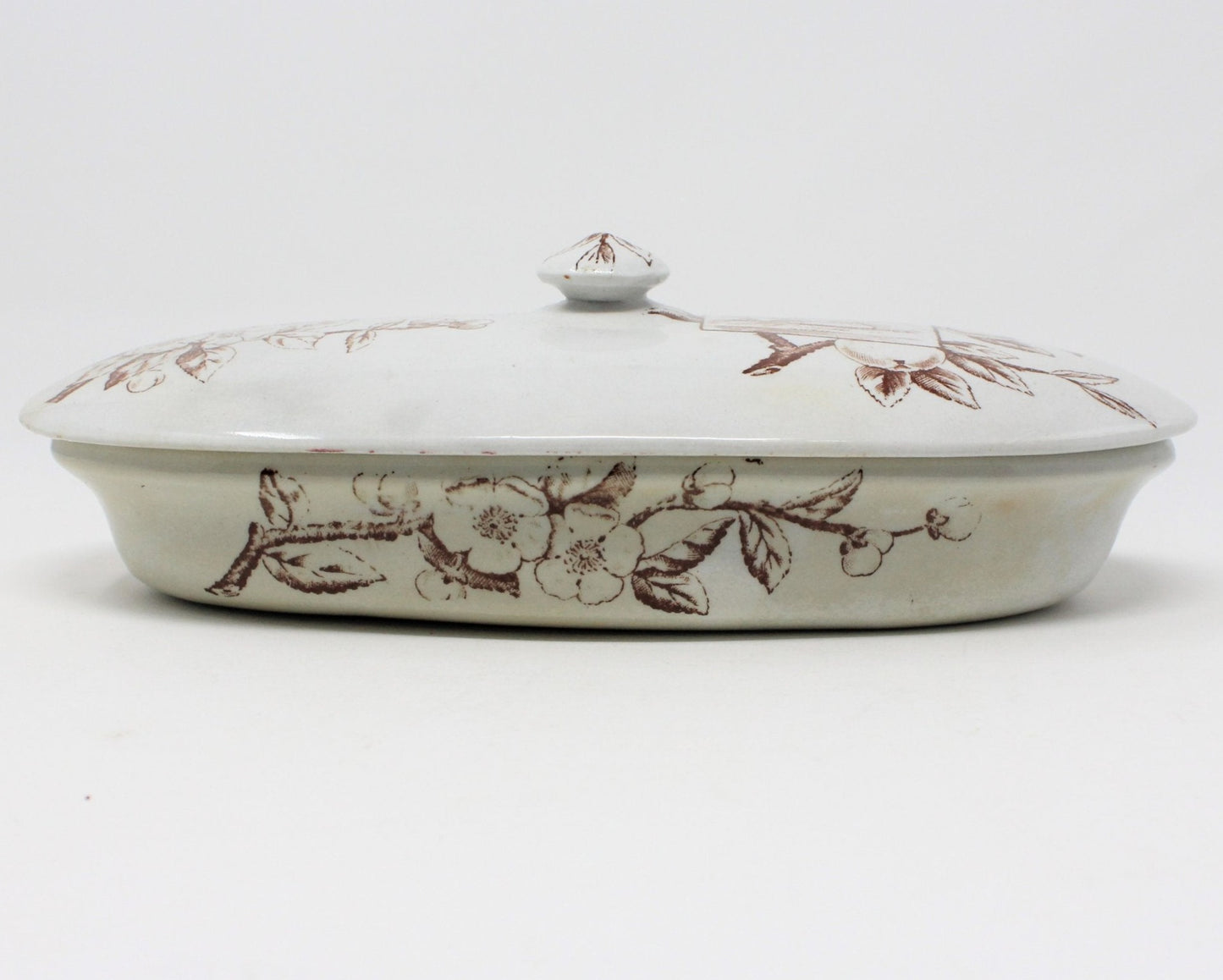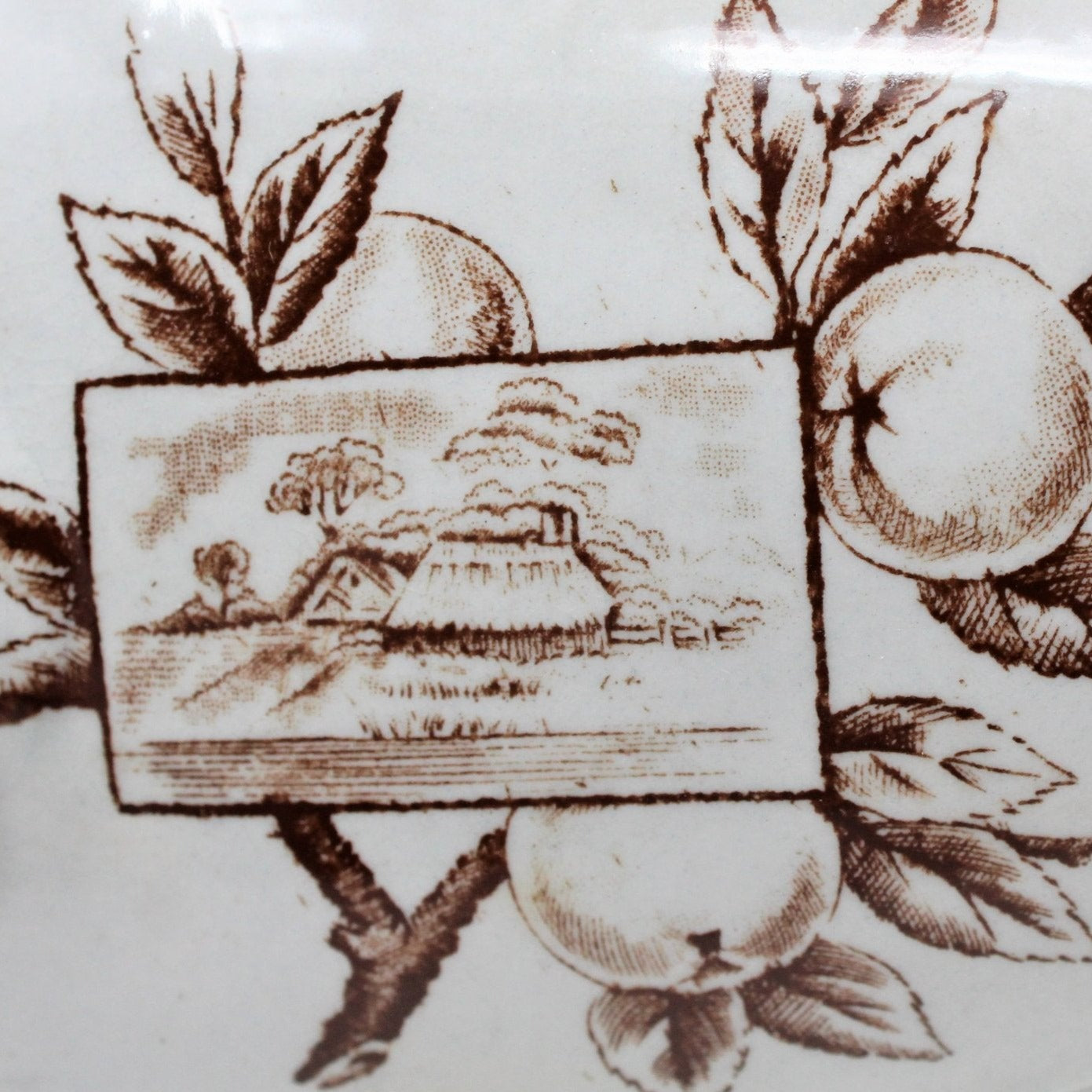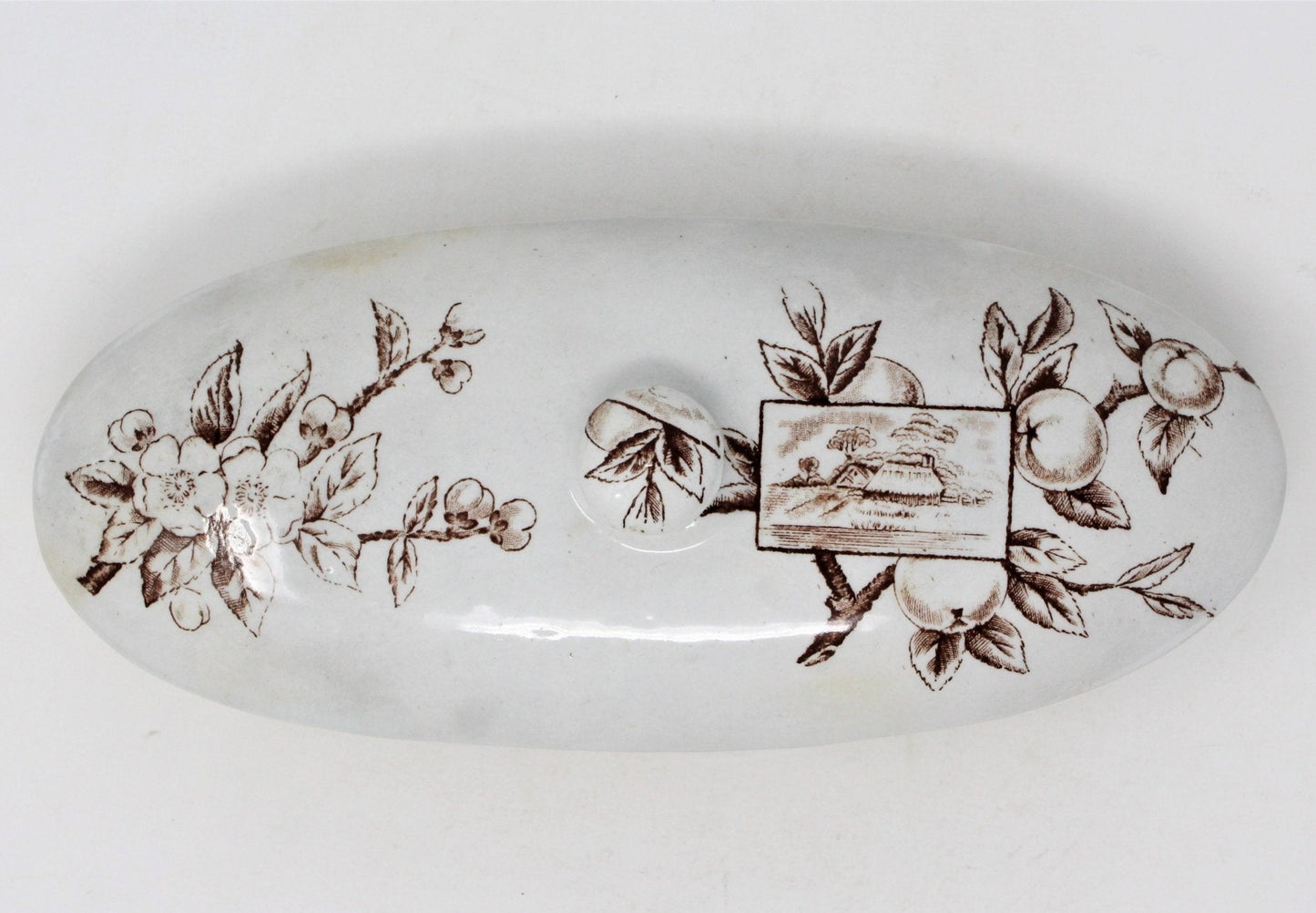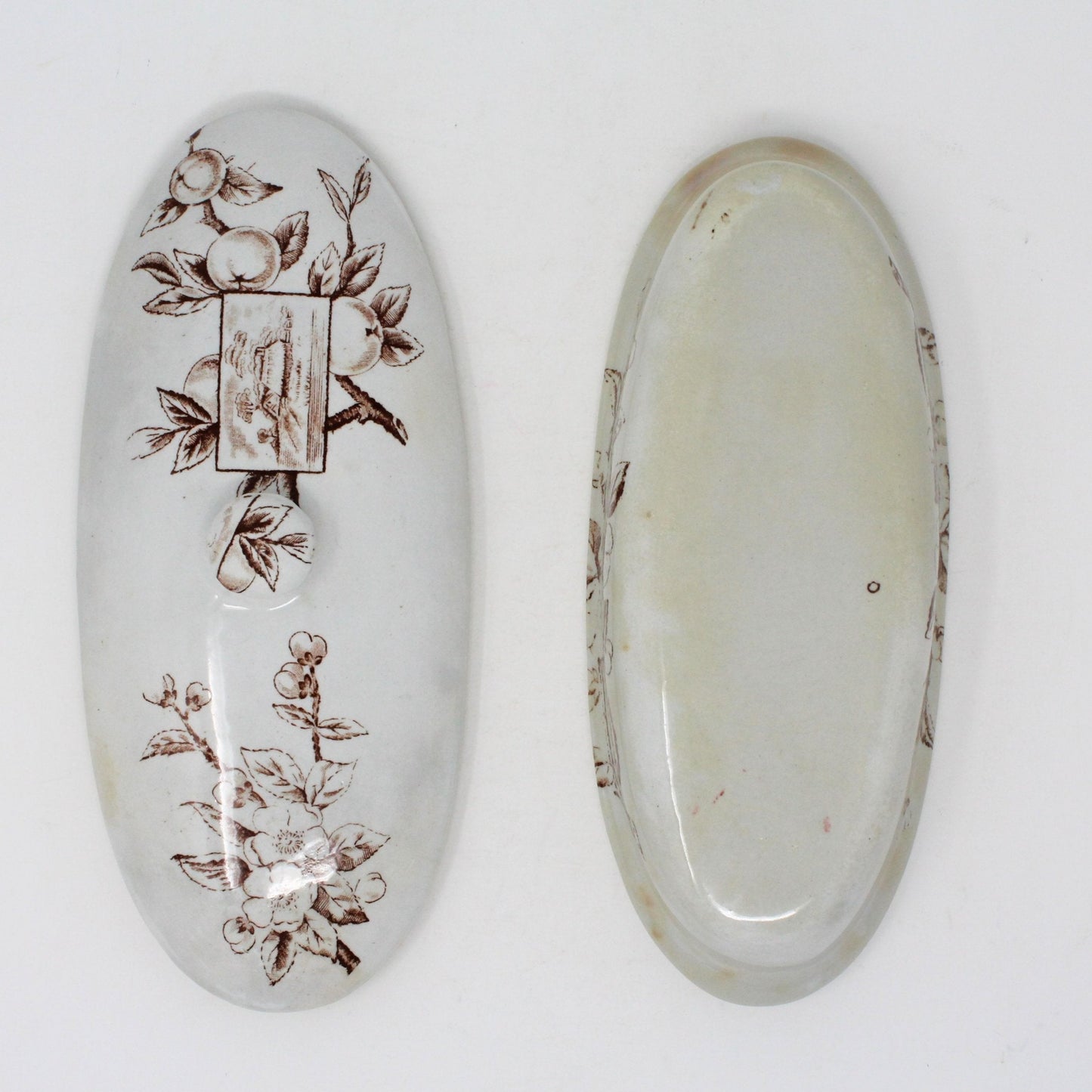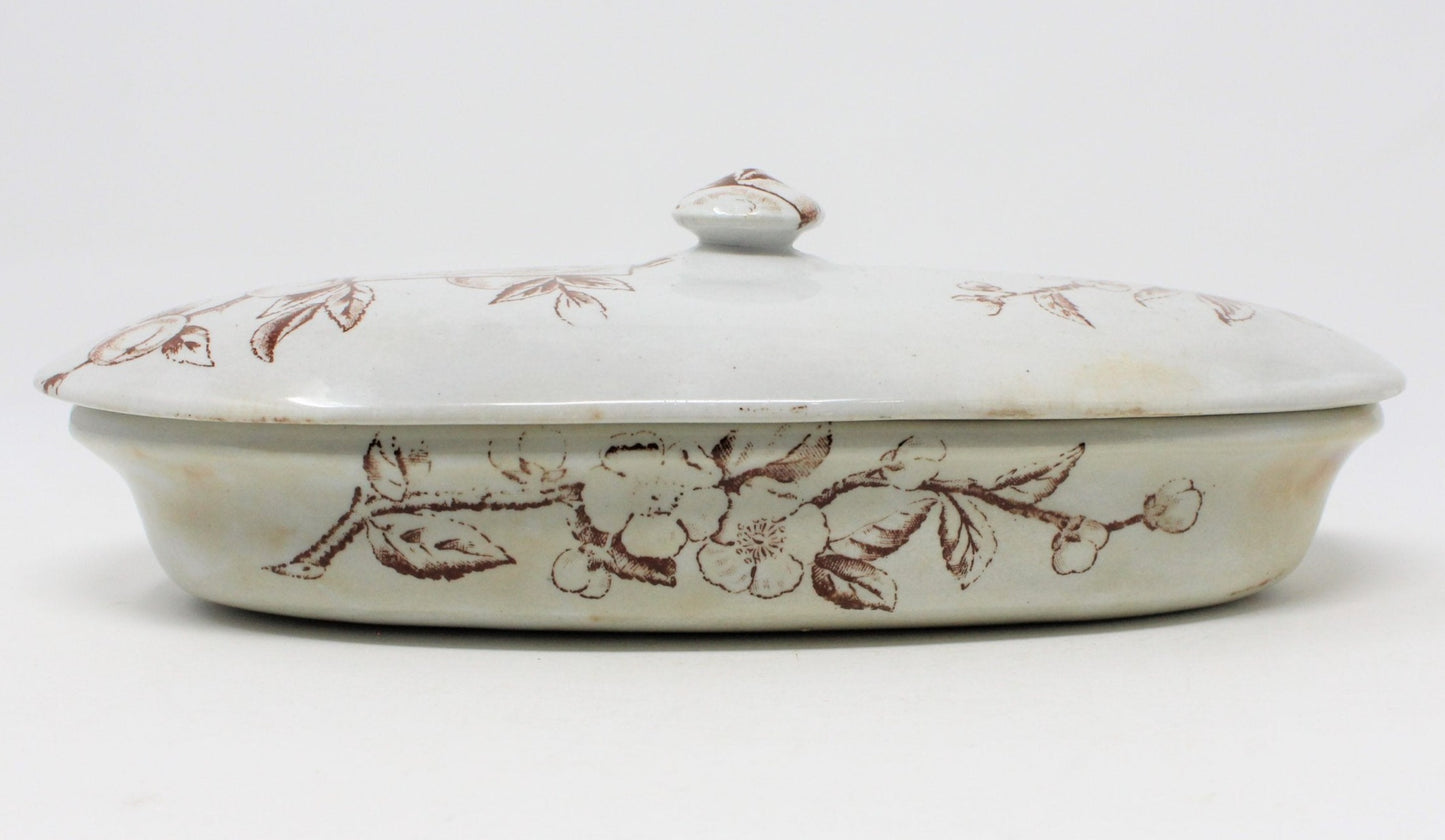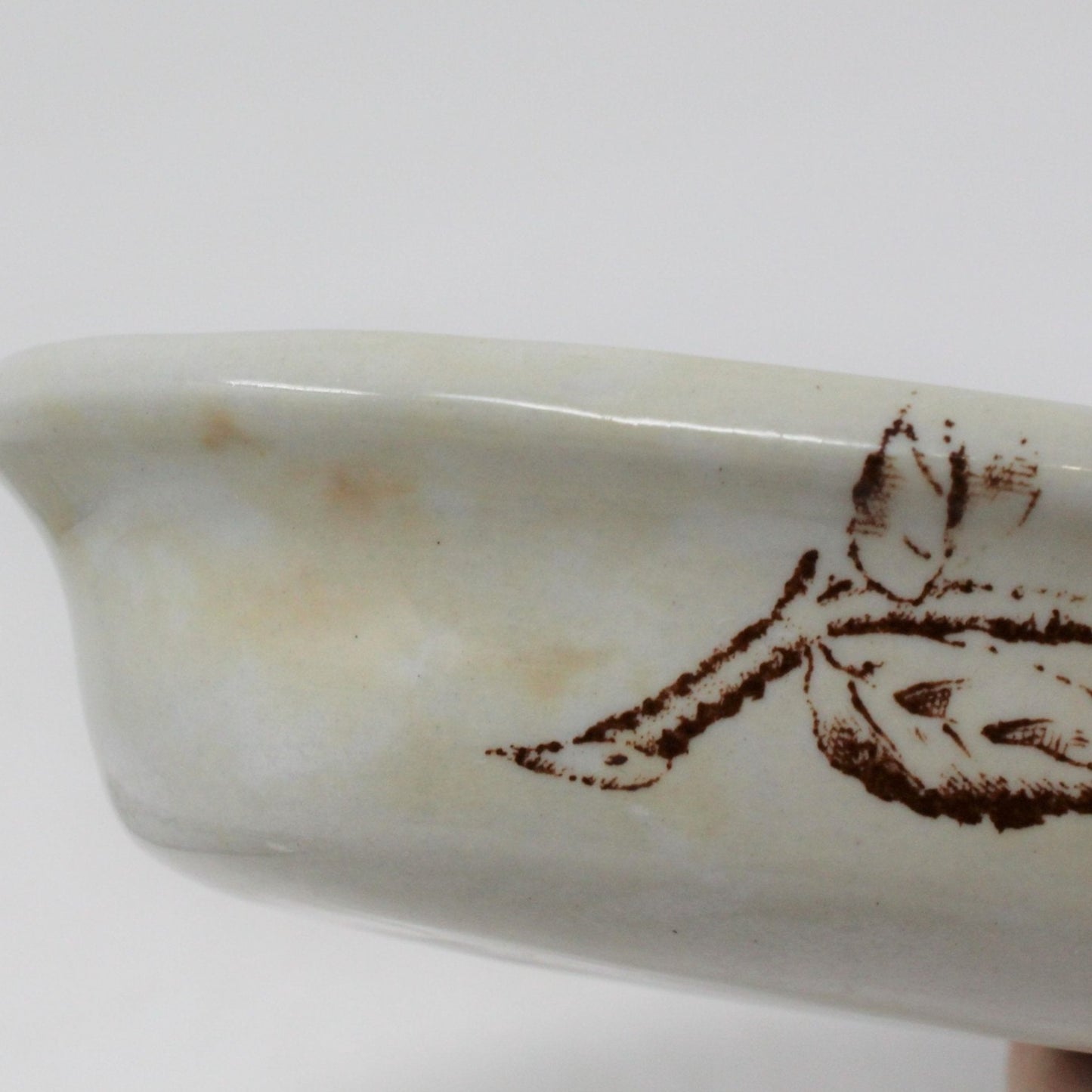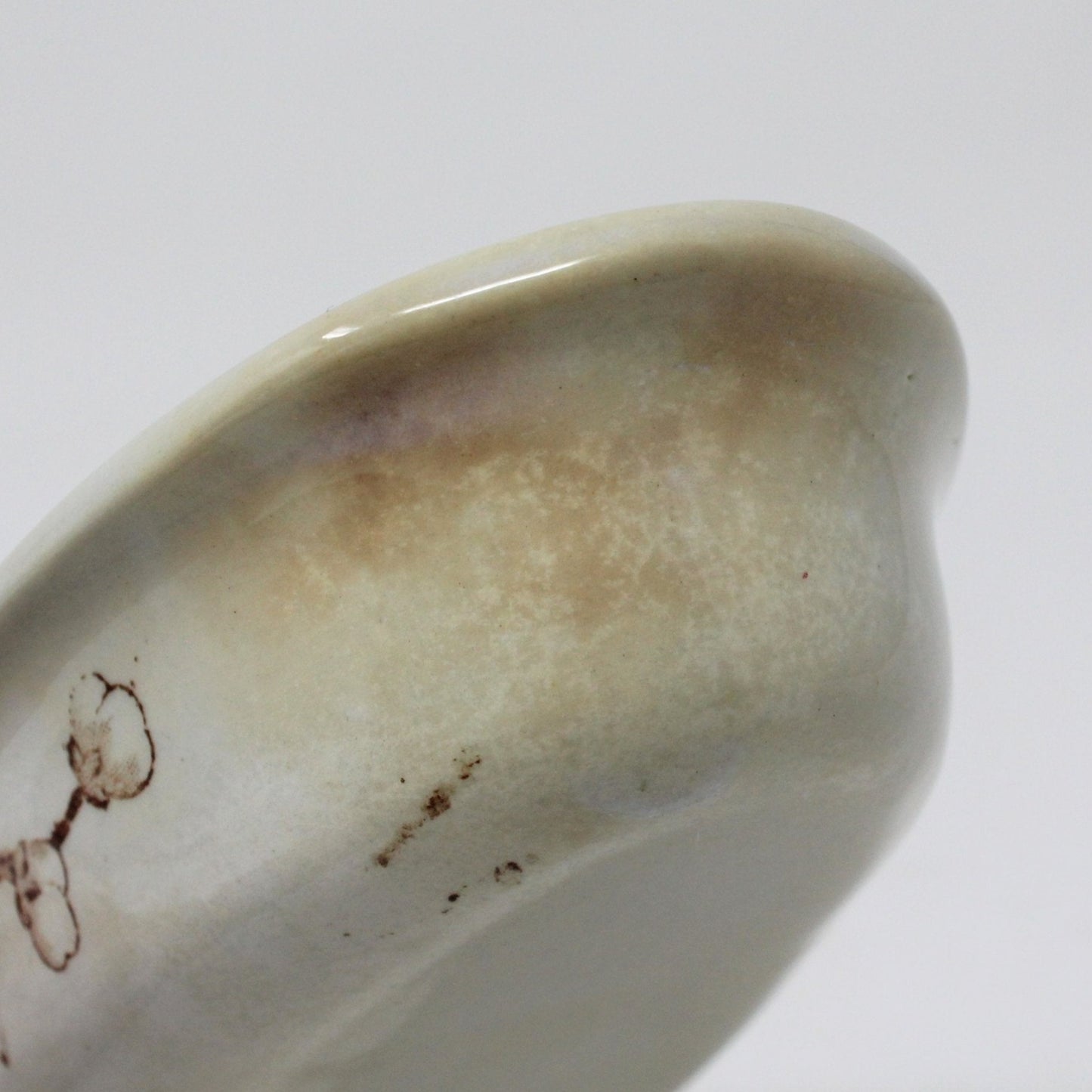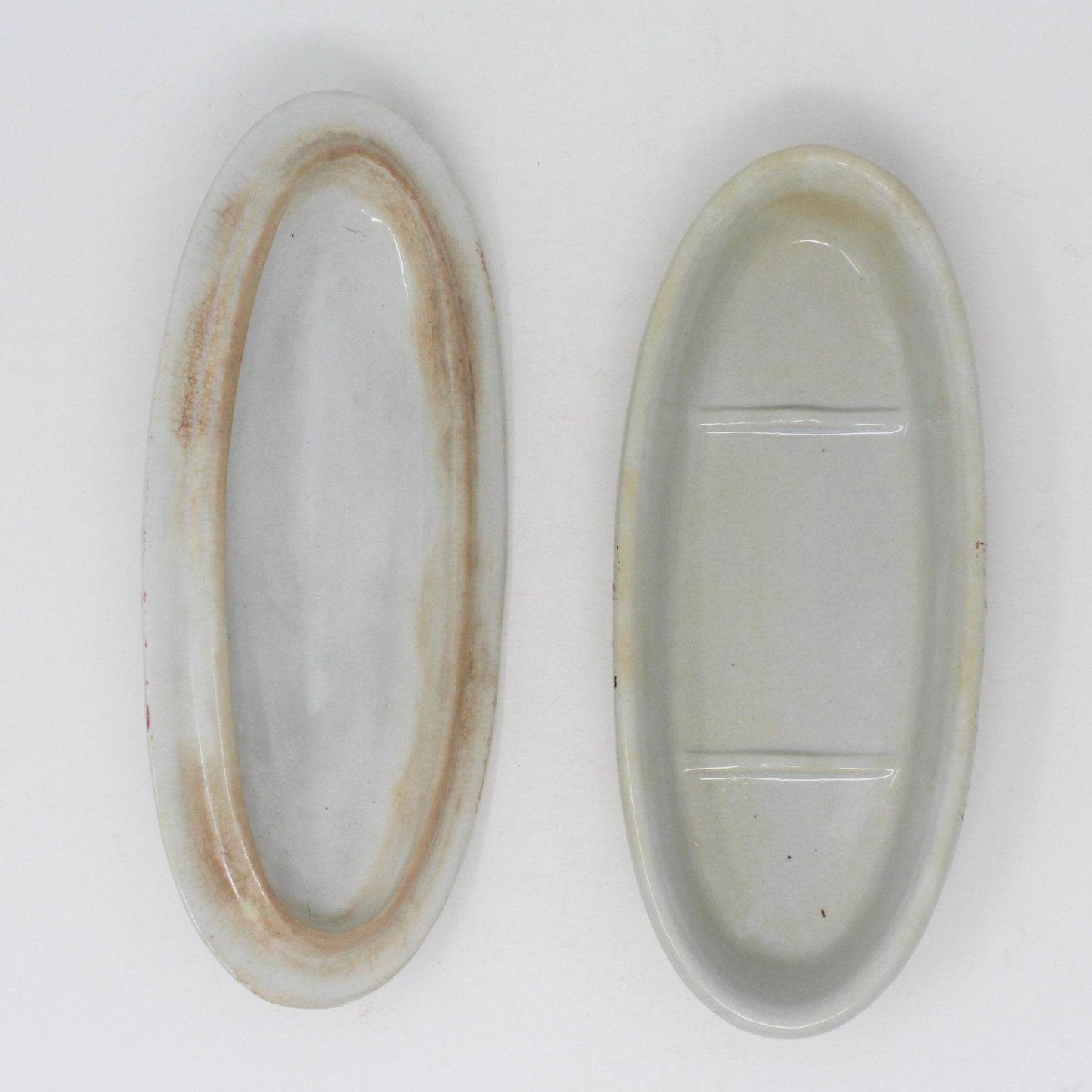Antigo Trunk
Razor / Toothbrush Dish, Transferware, Ironstone Victorian Aesthetic Movement, Antique
Razor / Toothbrush Dish, Transferware, Ironstone Victorian Aesthetic Movement, Antique
Couldn't load pickup availability
- Antique Dish with Lid, Vanity Soap Dish / Razor Holder / Toothbrush Holder, English Aesthetic Movement, English Ironstone Brown Transferware, Apples & Blossoms with Farmhouse Cartouche, Antique Collectibles, RARE, (Discontinued)
- Made in England
- Antique: 1870's - early 1900's
- Details: A very old and very rare dish, typically found in wash basin sets, perhaps a soap, toothbrush and/or razor holder. Definitely a vessel to store hygiene necessities, during the Victorian era (before indoor plumbing). This one features a tri-section base and matching lid, the pattern has apples, apple blossoms and a farmhouse cartouche, a rare find. We have estimated the date based on the pattern being from the Victorian Aesthetic Movement. We think this would make a very unique soap dish or other storage vessel. It is brown transferware and except for the typical ironstone stains, it is in great condition. It would make a wonderful gift for an Ironstone collector, a unique piece for an antique inspired bathroom.
- Material: Ironstone
- Dimensions: 8.5 inches Long, 3.75 inches Wide (at its widest point) and 3.0 inches Tall including the lid and finial/knob.
- Condition: Antique - Used. Very Good Antique Condition. Except for stains, (mainly on the bottom piece and the inside of the lid), this piece is in really good condition, no chips, scratches or cracks. We understand Ironstone stains can be removed, but we did not attempt as many prefer the patina of time-worn pieces. Please review all pictures and make sure you love this item before purchasing, we can't accept returns. Please remember these are ANTIQUE and VINTAGE items, they are NOT new, every effort has been made to show any scratches, wear and tear and imperfections.
The Victorian Aesthetic Movement was a late nineteenth century movement (1860's - 1900) that wanted to emphasize the visual and sensual qualities of art and design over practical, moral or narrative considerations. The supporters maintained that art should not be confined to painting, sculpture, and architecture, but should be a part of everyday life. The movement started small in the 1860's, in the studios and houses of a radical group of artists and designers, including William Morris and Dante Gabriel Rossetti. They denounced the sober morality and middle-class values that characterized the Victorian Age and embraced beauty as the chief pursuit of both art and life. Japanese art had a great influence on Aestheticism, many of the patterns used during this time period included Japanese prints, screens, fans and other objects with asymmetric, bold and geometric patterns. These tastes were also reflected in dinnerware with the use of transferware patterns consisting of nature, birds, flowers with inserted cartouches of buildings, animals, mountains and other scenery. These were mostly done in brown, however, slowly other colors such as red, green, blue and even multicolor were used. Although Aestheticism was popular with many people, it also became the subject of ridicule. The absence of a single, cohesive philosophy to bring all members together lead to many gravitating in different directions. By rejecting tradition and focusing on self-expression, the Aesthetic movement is credited with setting the stage for 20th-century modern art.
Share
